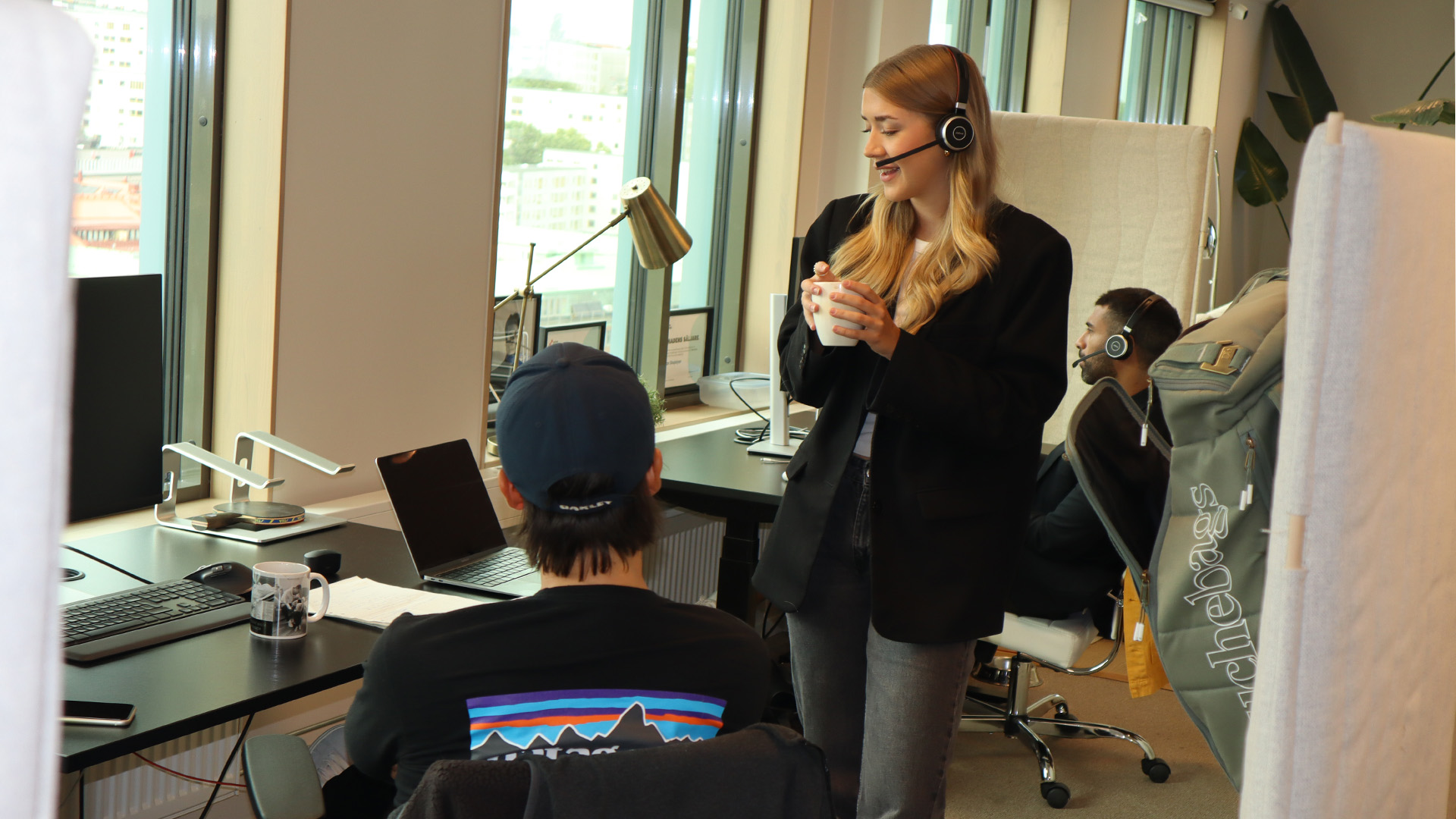What is an Employer Brand?
Your employer brand, also known as employer brand, is how you are perceived as an employer among current and potential employees. It represents how the employer perceives a workplace, including its culture, values, work environment, benefits and career opportunities.
A strong employer brand attracts new talent and helps retain current employees by creating a positive sense of belonging and commitment. It can also help the company differentiate itself from its competitors in the labor market and to attract the best candidates to its vacancies.
Imagine that an employer brand is like an elegant suit, tailored to impress. Every detail, from the fine fit to the carefully selected accessories, represents the company's uniqueness and promise to its employees. The workplace is the stage where this stylish suit is showcased, and every employee is an ambassador who wears it with pride.
What is Employer Branding?
But what does employer branding mean and why is it so important? Employer branding is a strategic process in which companies develop and manage their reputation and brand as an employer in order to attract, engage and retain talent.
If your employer brand is your employer brand, then employer branding, on the other hand, is the process of developing, managing and promoting that employer brand.
It involves strategically planning and executing activities to shape and enhance the company's reputation as an employer. It can include everything from defining the company's values and culture to creating marketing campaigns and improving the recruitment process to attract the right talent. More concretely:
Company culture: This includes values, mission and work environment within the organization. A positive company culture promotes employee satisfaction and attracts like-minded individuals who are aligned with the company ethos.
Employee Value Proposition (EVP): The EVP describes the unique benefits and benefits that employees receive from working for the organization. This includes aspects such as career opportunities, work-life balance, remuneration packages and company benefits.
Candidate Experience: The recruitment process reflects your employer brand. Offering a smooth and positive experience for job seekers, from application to employment, enhances your reputation as an attractive employer.
Brand communication: Effective communication is the key to building and maintaining a strong employer brand. Consistent messaging across channels is a great tool to convey the company's values and culture to potential candidates.
So basically, your employer brand is the result of your employer branding efforts.
“To create a corporate culture that attracts the right talent and promotes loyalty, employer branding is crucial. By building a strong employer brand, you can differentiate yourself from competitors in the market, while reducing recruitment costs and increasing employee engagement. By investing in employer branding, you can secure your competitiveness and secure your access to talent for the future.” — Karolina Broden, Head of Marketing at SMW Group.
Why Should You Use Employer Branding?
There are many advantages to investing in employer branding as a brand, here we have listed some of them:
Attractiveness: A strong employer brand attracts talent and makes it easier to attract highly qualified and suitable candidates for vacancies.
Retaining talents: By creating a positive employer experience and communicating the company's values and culture, employer branding can help retain existing employees and reduce employee turnover.
Differentiation: In a competitive job market, a unique and well-defined employer brand helps companies stand out and differentiate themselves from their competitors.
Increased productivity: When employees feel proud of their workplace and committed to its goals and values, they tend to be more productive and contribute more to the company's success.
Long-term growth: By investing in employer branding, the company can build a stable and sustainable workforce that is ready to meet future challenges and contribute to long-term growth and success.
Let's take Nike as an example in a pure marketing context. Say you need a new pair of gym shoes. When thoughts start to spin around which shoes to choose, it is very possible that brands like Nike or Adidas pop into your mind. That's perfectly reasonable, as they're some of the most established brands on the market. In addition, if you then decide to buy a pair of Nike shoes, the people you talk to will understand right away that you have invested in functional, trendy and sporty shoes, without you even having to explain.
This is exactly the effect you aim for when you are actively working with your employer brand. The goal is to create such a strong employer brand that potential candidates automatically think about your workplace when considering new career opportunities. You want to create a workplace that the top candidates crave, because they know it will give them a positive image to work there.
Why is employer branding so important?
50% of workers say they would not work for a company with a bad reputation, even for a pay rise. (GitNux)
84% of the organizations believe that a well-maintained employer brand helps them hire qualified personnel. (GitNux)
55% of all job seekers cancel their applications after reading negative reviews about a company. (GitNux)
61% of employees would consider taking a new job with a company that has a better Employer Brand. (GitNux)
62% of the organizations say that the employer brand is one of their most important HR functions. (GitNux)
92% of all job seekers consider transparency regarding pay and benefits to be a significant factor when considering a job offer. (Jobylon)
78% Some of the world's most attractive employers claim that employer branding is a top priority. (Universe)
A strong employer brand can result in:
43% reduction in cost per employment. (GitNux)
Reduce staff turnover by 28% . (GitNux)
Up to 2x as many applications. (Jobylon)
Who has succeeded best with their Employer Brand, you may be wondering? Randstad Employer Brand Research (REBR) is the largest independent employer branding survey in the world. It aims to identify which criteria Swedish workers consider important when choosing an employer and also measures the attractiveness of the 150 largest employers in the country. Report presents Sweden's top 25 most attractive workplaces on the criterion “How likely are you to want to work for this company?” Below, we've listed the top ten to give a hum as to which actors it is who are leading the torch in the war for talent:
- Spotify
- IKEA
- Swedish Television
- Ministry of Defence Materiel
- AFRY
- Epiroc
- Volvo Cars
- Armed Forces
- Volvo Group Inc.
- EY
“Employer branding is not just a buzzword; it is a crucial aspect within TA. By shaping a strong employer brand, organizations can attract top talent, promote employee satisfaction and ultimately drive business development.” — Alva Skoglund, Project Manager External Communications at SMW Group.
What is the difference between internal and external employer branding?
Let's explore the difference between internal and external employer branding by comparing them to different types of gardens:
Imagine that internal employer branding is like creating a lush and prosperous garden in your own home. You plant and nurture flowers, herbs and vegetables to create a beautiful and peaceful place that you and your family can enjoy every day. By nurturing this internal garden, you create a positive and pleasant working environment that strengthens the bond between you and your existing employees.
On the other hand, external employer branding is like planting a beautiful and inviting garden in front of your house, visible to anyone passing by. You carefully choose which plants and flowers will adorn the garden to attract visitors and admirers. Each blooming flower and plant represents a unique benefit or aspect of your company's employer brand. By investing in the care and promotion of this external garden, you attract potential candidates and showcase the company's culture and values in an attractive way.
In this way, internal and external employer branding works side by side to create a prosperous and attractive environment in which both existing and potential employees can flourish and grow.
Key Takeaway — Stay Authentic! Do not put up a facade just to attract new candidates if it does not correspond to the actual experience as an employee. The only thing that will result is high turnover and we all know how costly and time-consuming that is. So make sure that both your internal and external employer brand thrives.
What is the difference between employer branding and employee branding?
In short: employer branding focuses on promoting the company to potential candidates, while employee branding aims to shape how a company's current employees view their brand.
Some good examples of employer branding:
Curious about what a good employer branding campaign might look like? Here are some of the best employer branding videos for you:
London's #1 breast screening programme — NHS
With an employer branding video that touches, the NHS shows that they offer a working life that touches and makes a difference.
https://www.youtube.com/watch?v=bakwS0_Xjwk
#2 Inclusion & Diversity — Apple
Focus on their inclusive culture. Who are the employees at Apple? Well, it could be just anyone, maybe even you.
https://www.youtube.com/watch?v=cvb49-Csq1o
#3 There's a magician in every technician — Bellewaerde
With creativity at its centre, Bellewaerde plays on the playful culture of the workplace. Here, a picture is painted of a working day full of color and play.
https://www.youtube.com/watch?v=-vD9U2AXJHA
#4 Another generic recruitment video — Fiverr
An ironic twist on a hackneyed concept shows the humor that permeates the culture on Fiverr. A neat way to put a fun touch on something otherwise pretty pale.
https://www.youtube.com/watch?v=S5rvJOcff_I
How do you get started with Employer Branding?
Getting started with employer branding can seem overwhelming at first, but here are a few steps that can help you along the way:
Understand your current situation: Evaluate your current workplace culture, company values, and existing reputation as an employer. Identify strengths and weaknesses and areas where improvements can be made.
Define your employer branding proposition (EVP): Determine what values, culture, and benefits make your workplace unique and attractive to employees. Develop a clear and authentic EVP that you can communicate both internally and externally.
Engage your employees: Involve your existing employees in the process by gathering feedback, ideas, and stories about their experiences in the workplace. Create a sense of participation and ownership among employees in shaping the employer brand.
Promote your employer brand: Use different channels and platforms to communicate your employer brand to potential candidates. That can include your company website, social media, recruitment ads, career pages, and participation in industry events and networking.
Create a positive employment experience: Make sure the real-world experience in the workplace matches the employer brand you're communicating. Offer a positive and supportive work environment, clear career opportunities and benefits that contribute to employee well-being and satisfaction.
Evaluate and adjust: Monitor and evaluate the effectiveness of your employer branding efforts regularly. Collect feedback from both employees and candidates and use that information to make adjustments and improvements over time.
Want to learn more about how to build a proper strategy to strengthen your employer brand? Contact us at marknad@smwg.se and we will create a plan that suits your specific needs.












